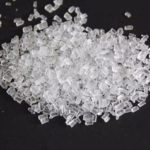De-chlorination of Koi pond water using Sodium Thiosulphate
Sodium Thiosulphate – There’s probably not a fish lover in the world who hasn’t heard of Koi. Known for its vibrant and unique colours, Koi is an informal – yet large – group of fish comprising several variants including Kohaku, Asagi, and Tancho.
While Koi fishes are owned by hobbyists in the UK and across the globe, it’s unfortunate that the vast majority is not equipped with the basic knowledge required to take care of this unique group of fish. Needless to say, far too many of these fishes catch diseases and end up dying – leaving oblivious owners curious as to what they have been doing wrong.
What most people in the UK fail to realize is that one of the major reasons why Koi fish experiences untimely death is due to chlorine poisoning. Toxic to aquatic life, chlorine can not only cause burns when in contact with fishes, but can also harm them in a multitude of other ways. Needless to say, chlorine also has adverse effects on Koi fish, causing them to suffer needlessly.
Unfortunately, however, quite a number of people use tap water in their fish ponds and aquariums to this day, ignorant to the fact that the water that reaches our taps is treated with chlorine and other chemicals to ensure that it is hygienic and suitable for consumption.
Not sure how to identify whether your fish has suffered from chlorine poisoning? Here are some symptoms to look out for:
- Fish may appear pale
- Fish may seem to be covered in mucus
- Patches of redness may be visible on the fish
- Fish may be swimming haphazardly
- Fish may frequently rise to the surface of the pond or body of water
Even though chlorine poisoning is a severe issue, the damage can be reversed and prevented if appropriate measures are taken beforehand. Using treated water that is appropriate for fishes and aquatic life is the best technique to prevent complications time and again. And you will be happy to know that it is possible through de-chlorination of ponds and other bodies of water using Sodium Thiosulphate.
When used in ponds, swimming pools, and other bodies of water, Sodium Thiosulphate can neutralize the effects of chlorine, leaving the water safe for aquatic life and mitigating the risk of chlorine poisoning. Available in crystal form, Sodium Thiosulphate needs to be broken down and diluted before being added to the water.
Need more information to keep your Koi fishes healthy and happy? Head over to https://mykoionline.com/ for unique content and informative tips
The Mix I use is as follows :
260gms per 2 Lt Boiled (Cooled Water) to make the master concentrated mix
Then 10ml per 100 gallons.
